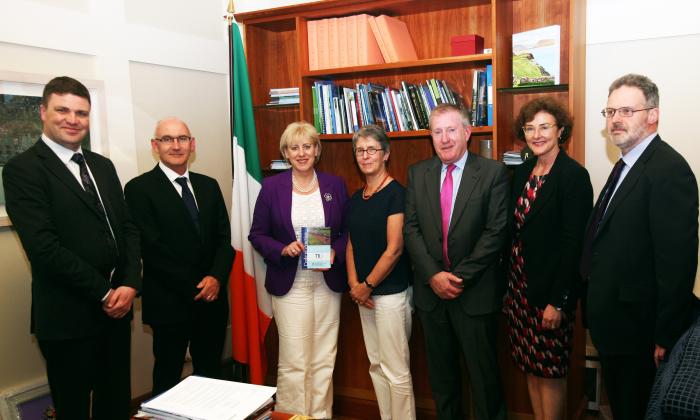New TII Code of Practice for Archaeology
On Tuesday 27 June 2017, Transport Infrastructure Ireland (TII) and the Minister for Arts, Heritage, Regional, Rural and Gaeltacht Affairs, Heather Humphreys TD, launched a new Code of Practice for Archaeolog to provide a framework for the management of the archaeological aspects of TII national road and public transport projects. This new code will replace the Codes previously agreed with the National Roads Authority (NRA) in 2000 and the Railway Procurement Agency (RPA) in 2007.
Speaking at the launch Michael Nolan, CEO of TII, particularly welcomed the new Code “as it helped ensure that projects were derisked at the outset, while providing a tremendous opportunity for discovery” and noted that “the previous Codes of Practice had significantly reduced and minimised claims arising from archaeological works.” Michael Nolan also highlighted the value and benefit of having in-house Project Archaeologists, who were also project managers.
Codes of Practice have been recognised as being central to the efficient and effective management of archaeology between the Department and infrastructure providers. Indeed, the Archaeology 2025: strategic pathways for archaeology in Ireland document recently published by the Royal Irish Academy comments that these codes have ‘led to a streamlining of the development process, with significant improvement in the speed and efficiency of archaeological mitigation resulting in time and cost savings’. The NRA and RPA Codes of Practice have led to a significant improvement in the standard and level of archaeological reporting, as evidenced by the launch last week of the TII Digital Heritage Collections, with more than 1,600 archaeological excavation reports securely archived for the future and available for download.
With the merger of the NRA and RPA into TII in 2015, it is appropriate to have an amalgamated Code that will provide a single framework for managing archaeology across all TII projects. This will be of benefit to both TII and the Department’s National Monuments Service in terms of simplifying the oversight processes of each, while being cognisant of the different characteristics of national road and public transport projects.
Some of the key changes include:
-
setting out TII’s requirements under the Public Spending Code and ensuring that all TII-funded projects are included where TII is the sanctioning authority and/or the sponsoring agency
-
addressing the requirements of the 2004 amendment to the National Monuments Act, including the introduction of Ministerial Consents and Directions for approved road schemes
-
developing appropriate archaeological strategies where advance archaeological works are not practical (of particular concern on light rail projects within Dublin City and road schemes within historic towns)
-
updating timescales for approvals
-
ensuring management of all aspects
-
providing the necessary funding for post-excavation works
-
ensuring the dissemination of the archaeological results of TII projects

Photo of the launch of the new TII Code of Practice for Archaeology showing (left to right) Rónán Swan, TII Head of Archaeology and Heritage, Michael Nolan, TII CEO, Heather Humphreys TD, Minister for Arts, Heritage, Regional, Rural and Gaeltacht Affairs, Dr Ann Lynch, Chief Archaeologist, National Monuments Service, Terry Allen, Principal Officer, National Monuments Service, Helen Hughes, TII Director of Professional Services, and Sean Kirwan, Senior Archaeologist, National Monuments Service (© National Monuments Service, Department of Arts, Heritage, Regional, Rural and Gaeltacht Affairs).